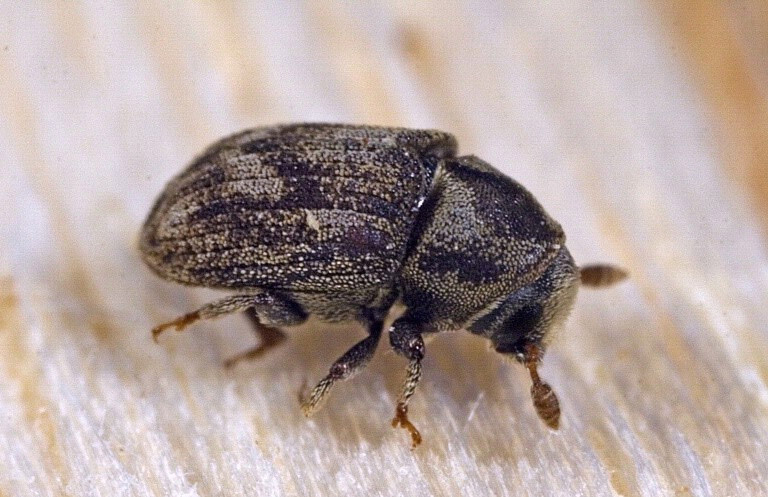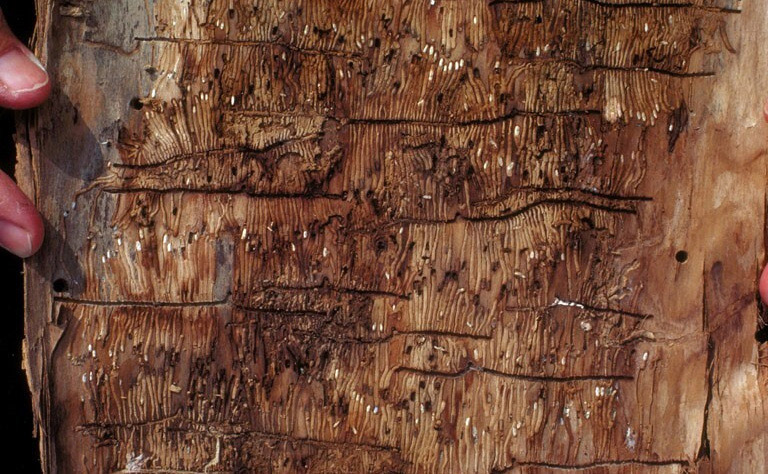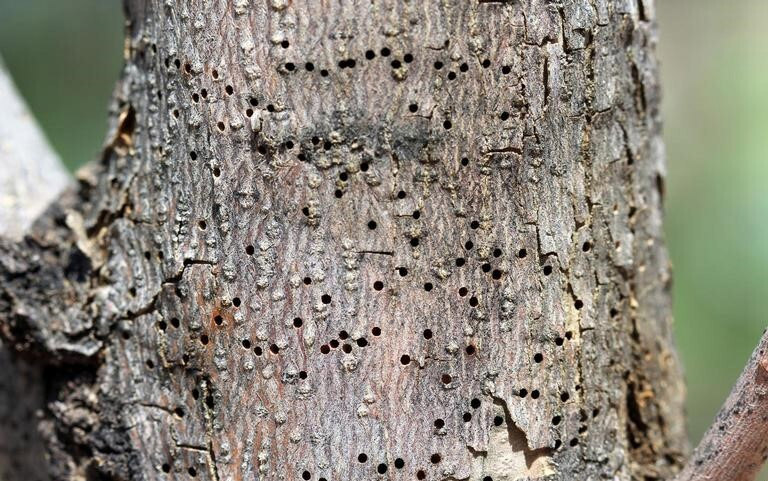Ash Bark Beetles (Hylesinus spp.)

Figure 1. Ash bark beetle adult. Photo by D. Cappaert, Bugwood. Larger image (124KB).
Host Tree
Ash (Fraxinus spp., not mountain-ash).
Damage and Symptoms
The small beetles (2-4mm) make a pattern of ventilation holes that form a ring around the branch. They prefer to breed in recently cut, broken, and stressed trees. They also infest trees weakened by mechanical injury, disease, or fire.

Figure 2. Ash bark beetle galleries under the bark. Photo by J. Solomon, Bugwood. Larger image (164K).

Figure 3. Ash bark beetle exit holes. Photo by W. Cranshaw, Bugwood. Larger image (140KB).
Life Cycle
The adult bark beetles emerge in the spring and fly to trunks or limbs of recently felled, dying, or weakened trees. They mate and lay eggs in branches. The larvae burrow under the bark where they continue to develop and feed, pupate, and then emerge as adults. The larvae either overwinter under the bark, or the adults cut niches in the outer trunk in which to overwinter.
Management
Stressed trees will attract the beetles. Infested branches can be identified with the presence of wilted leaves. Pruning is most successful in the spring, before the adult beetles emerge from the bark. Maintain the health and vigor of the tree and prune infested branches. Preventive insecticides can be sprayed on the lower trunk of the tree in late summer/early fall to control some of the overwintering populations of the beetles.
Further Information
To learn more about the topics discussed on this page, contact the Schutter Diagnostic Lab. If you suspect an infestation on your property, contact your local extension agent, the Schutter Diagnostic Lab at Montana State University, or the Montana Department of Agriculture.
This ash borer fact sheet is also available as a printable PDF (560KB).
Disclaimer: These recommendations are provided only as a guide. It is always the pesticide applicator’s responsibility, by law, to read and follow all current label directions for the specific pesticide being used. The authors and Montana State University assume no liability resulting from the use of these recommendations. The Montana State University Extension Service is an ADA/EO/AA/Veteran’s Preference Employer and Provider of Educational Outreach.
